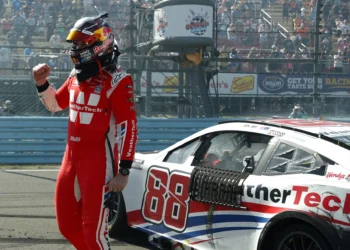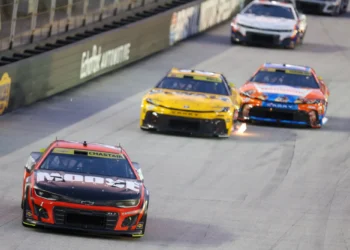The maneuver that has been a game-changer in recent Indianapolis 500 races has been officially banned for 2024. This controversial maneuver, known by various names such as the snake, the dragon, and the weave, involves a driver technically weaving to break the draft of the car behind him, preventing it from getting closer. IndyCar has now implemented a plan to put an end to this maneuver. Last year’s winner, Josef Newgarden, believes the maneuver emerged in 2015, but it was Simon Pagenaud’s aggressive use of it in 2019 that sparked widespread discussion at the Speedway.
Critics of the maneuver, who are usually drivers who do not win races or do not have the opportunity to use it regularly, argue that it poses significant risks due to the high speeds at which it is executed. So far, the maneuver has been allowed because it technically does not violate any IndyCar rules. Since it is initiated by the leading driver, it cannot be considered blocking, as the driver intentionally moves away from the car behind instead of approaching it. Additionally, penalizing the maneuver after the race presents complications for the show, especially considering the intense emotions and numerous ceremonies that follow the Indianapolis 500.
The maneuver has become more prevalent under the current set of rules, where the leading car is vulnerable to passing attempts from behind. Newgarden’s explanation of his defense against Marcus Ericsson last year exemplifies this, as he felt the need to use the maneuver to avoid losing the race, knowing there would be no consequences. However, the introduction of new regulations aims to address this issue and change the dynamics of the races, especially in this specific part of the race.
Ericsson, who used the maneuver to win in 2022, remains skeptical that the new rule will significantly alter the outcome of this section of the race. He believes that, when it comes to the final lap, anything goes at the Indianapolis Motor Speedway. In terms of enforcement, IndyCar has established a dotted line that extends from the pit wall to Turn 4. If a driver crosses that line with the left side wheels, they will be subject to penalties. Penalties range from a drive-through penalty, a time penalty equivalent to a drive-through if the maneuver occurs on the final lap, or dropping to the back of the restart grid if it happens under yellow flag conditions. However, there are exceptions to this rule, such as crossing the line while entering the pits, avoiding an incident, or making a clear attempt to return to the track if the pit entry is unexpectedly closed.
In addition to the ban on the controversial maneuver, there is another rule change for this year’s Indianapolis 500. IndyCar has introduced a restart line in other races to minimize accidents and aggressive racing during restarts. However, this rule will not apply to the 500 Miles, where drivers are allowed to race wherever they are on the track as soon as the green flag is waved.













